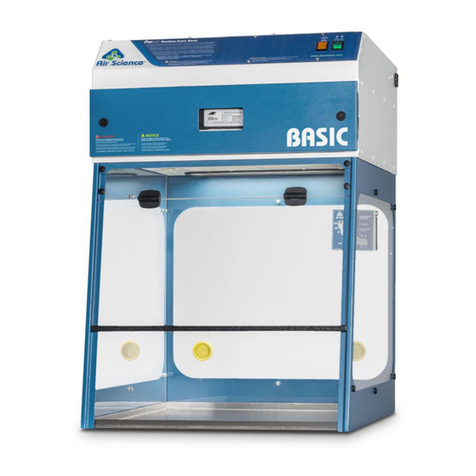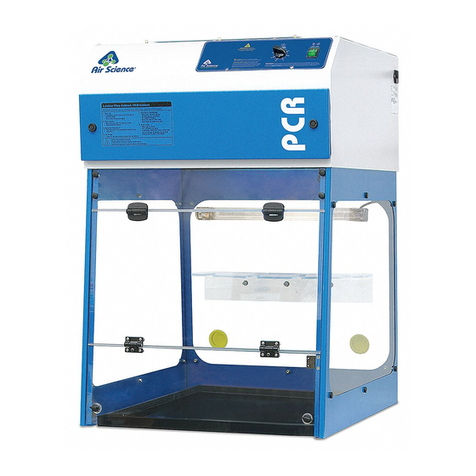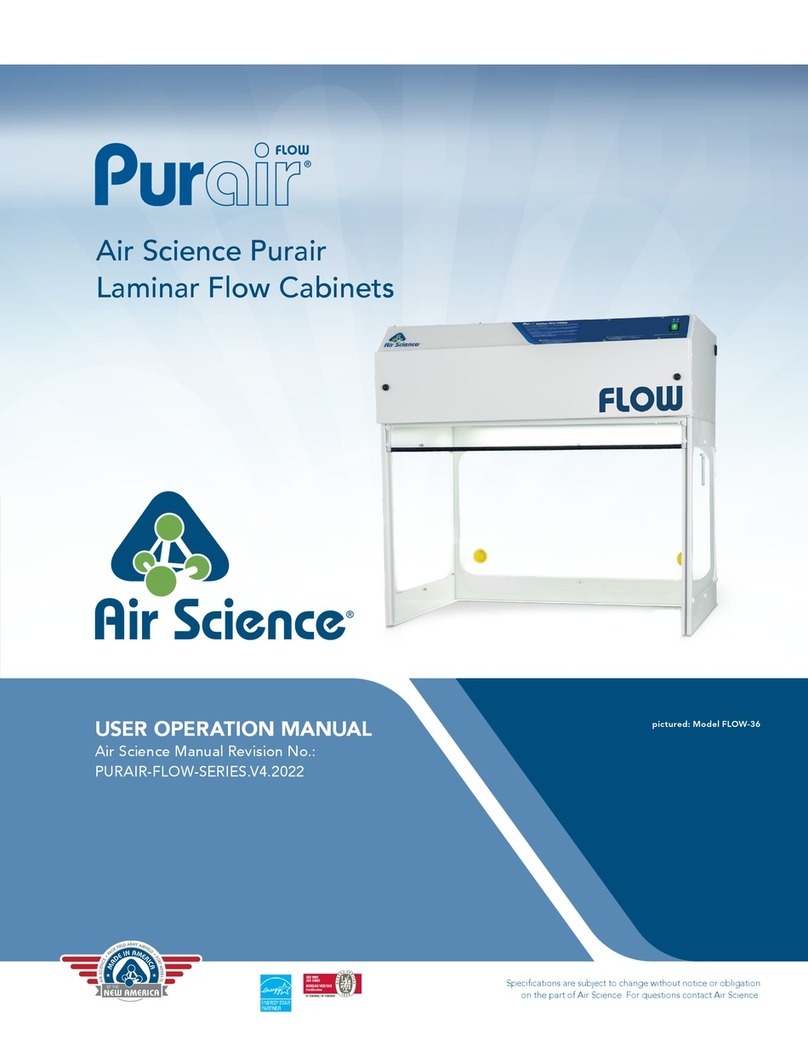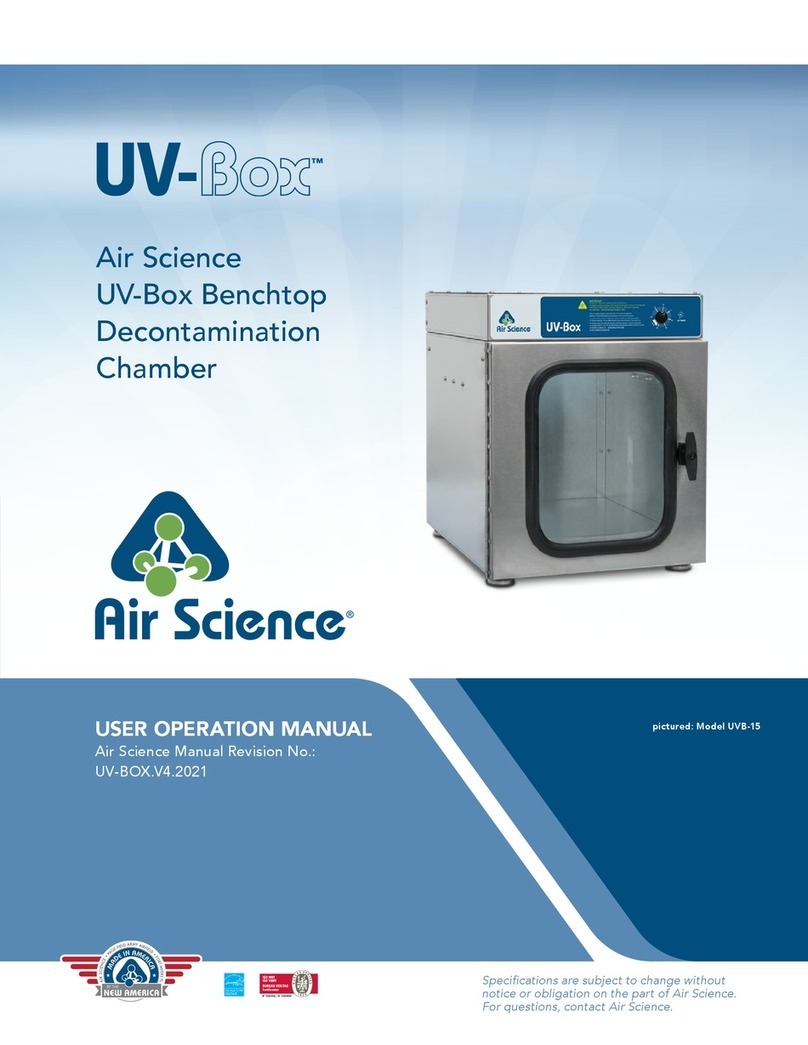
Air Science® 120 6th Street \Fort Myers, FL 33907 \T239-489-0024 \Toll Free 800-306-0656 \F800-306-0677 \www.airscience.com
3 \ USER OPERATION MANUAL: Safekeeper Series
Safety Warnings
• Read all instructions before proceeding and observe the installation procedure and
environmental/electrical requirements.
• This cabinet does not offer product and/or sample protection.
• Read all instructions before proceeding and observe the installation procedure and environmental/electrical
requirements.
• Anyone working with, on or around this equipment should read this manual. Failure to read, understand and
follow the instructions given in this documentation may result in damage to the unit, injury to operating personnel
and/or poor equipment performance.
• Anyinternaladjustment,modicationormaintenancetothisequipmentmustbeundertakenbyqualiedservice
personnel.
• Theuseofanyhazardousmaterialinthecabinetmustbemonitoredbyanindustrialhygienist,safetyofceror
someothersuitablyqualiedindividual.
• Explosiveorinammablesubstancesshouldneverbeusedinthecabinetunlessaqualiedsafetyprofessionalhas
evaluated the risk involved.
• If chemical, radiological or other non-microbiological hazards are being used in the cabinet, additional protective
measures should be taken. Additionally, the operation should be monitored by a suitably trained individual.
• Before you proceed, you should thoroughly understand the installation procedures and take note of the environ-
mental/electrical requirements of the cabinet.
• Iftheequipmentisusedinamannernotspeciedbythismanual,theprotectionprovidedbythis
equipment may be impaired.
• Evenwiththebenetstheyprovide,germicidalultravioletlampsposeimminentdangerifusedwithouttakingthe
proper precautions. You MUSTavoidexposuretodirectorreectedgermicidalultravioletrays,sincetheycause
painful eye irritation and reddening of the skin. In order to use our direct germicidal UVC products, you MUST
wear personal protection equipment—gloves, a long sleeve shirt with no gaps between cuffs and gloves and an
ultraviolet-blocking face shield to protect eyes and exposed skin. Under no circumstances should any direct ger-
micidal UVC unit be permitted to operate with humans, plants or animals present in the operation area.
Symbols
Warning of hazardous area or situation
Limitation of Liability
The disposal and/or emission of substances used in connection with this cabinet may be governed by various local
regulations. Familiarization and compliance with any such regulations are the sole responsibility of the users of the
cabinet. The liability of Air Science®is limited with respect to user compliance with such regulations.
European Directive on Waste Electrical and Electronic Equipment (WEEE)
At the end of your product / accessories life, it must not be discarded as domestic waste.
Ref: EU Directive 2012/19/EU on Waste Electrical and Electronic Equipment Directive (WEEE).
Please contact your distributor / supplier for further information. For end users outside of the
EU consult applicable regulations.
































